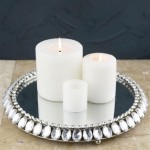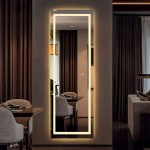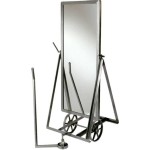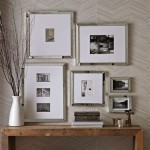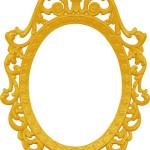Hanging Large Mirrors With Adhesive
Large mirrors can dramatically enhance a room, creating an illusion of spaciousness and reflecting light to brighten the space. Traditionally, hanging heavy mirrors required drills, screws, and wall anchors. However, advancements in adhesive technology now offer a viable alternative, particularly for those hesitant to drill into their walls. This article explores the process of hanging large mirrors using adhesive, outlining important considerations and providing a step-by-step guide for safe and effective installation.
Assessing Mirror and Wall Suitability
Before opting for adhesive, it's crucial to assess both the mirror and the wall. Adhesive solutions are not universally applicable. The weight and size of the mirror play a significant role in determining adhesive suitability. Manufacturers often specify weight limits for their adhesive products. Exceeding these limits could lead to the mirror detaching from the wall, posing a safety hazard. Furthermore, the wall material itself must be considered. Porous surfaces like drywall are generally suitable for mirror adhesives, while textured wallpaper, brick, or uneven surfaces might compromise the adhesive bond. Smooth, clean, and non-porous surfaces offer the best adhesion.
Choosing the Right Adhesive
The market offers a variety of adhesives specifically designed for mounting mirrors. These products are often formulated to provide a strong, lasting bond capable of supporting significant weight. Key factors to consider when choosing an adhesive include weight capacity, application method, and curing time. Some adhesives come in pre-measured strips, while others are dispensed from tubes. Reading product specifications carefully and selecting an adhesive that aligns with the mirror's weight and the wall's characteristics is essential. Consulting with a hardware store professional can also provide valuable guidance in choosing the appropriate adhesive.
Preparing the Wall Surface
Proper wall preparation is crucial for achieving optimal adhesion. The wall surface must be clean, dry, and free from dust, grease, or any other contaminants that could interfere with the adhesive bond. Cleaning the wall with a mild detergent and water, followed by thorough drying, is typically recommended. For walls previously painted with glossy paint, light sanding can improve adhesion. If patching or repairing the wall is necessary, ensure these repairs are fully cured before applying the adhesive.
Marking Mirror Placement and Applying Adhesive
Accurate placement is key to achieving a desired aesthetic. Before applying adhesive, carefully mark the intended position of the mirror on the wall using a level and pencil. Consider any existing wall fixtures or furniture when determining placement. Once the position is marked, follow the adhesive manufacturer's instructions for application. This may involve applying adhesive strips to the back of the mirror or directly to the wall in a grid pattern. Ensuring even distribution of the adhesive is vital for uniform support and a secure bond.
Mounting the Mirror and Ensuring Support
Mounting the mirror requires careful alignment with the marked position. After applying the adhesive, carefully position the mirror against the wall, ensuring it aligns with the marked lines. Firmly press the mirror against the wall for the duration specified by the adhesive manufacturer. For larger, heavier mirrors, temporary support may be necessary during the curing period. This can be achieved using props or supports to prevent the mirror from slipping or detaching before the adhesive fully sets.
Curing Time and Post-Installation Inspection
Adhesives require a specific curing time to achieve maximum bonding strength. This duration varies depending on the adhesive product and ambient conditions. It's essential to avoid disturbing the mirror during the curing period to prevent weakening the bond. Once the curing time has elapsed, carefully inspect the mirror to ensure it is securely affixed to the wall. Gently apply pressure to different areas of the mirror to check for any movement or instability. If any issues are detected, consult the adhesive manufacturer's instructions for remedial action.
Safety Considerations
Safety should be a paramount concern throughout the entire process. When working with large mirrors, it's advisable to have assistance to avoid accidents. Wearing appropriate safety gear, such as gloves and eye protection, is recommended. Dispose of any used adhesive materials according to manufacturer guidelines. Finally, periodically inspect the mirror mounting to ensure its continued stability and address any signs of loosening or detachment promptly.

Large Plain Bathroom Mirror Wall Mounted Self Adhesive Frameless Bevelled Edge

Using Command Strips For Hanging A Mirror The Morris Mansion

Putting Your Mirror Up With Adhesive April 2024 Our 5 Picks For The Best Adhesives

Frameless Mirror Self Adhesive Bathroom Wall Hanging Glass Vanity Hallway

1 Set 4pcs 120 30cm Acrylic Mirror Stickers Hd Full Wall Hanging Glass Self Adhesive Square Make Up Large Long For Home Gym Corridor Dormitory Floor Tiles Shein Euqs

How To Remove A Mirror Glued The Wall Forbes Home

Full Dressing Mirror Wall Self Adhesive Makeup Hanging Paste Floor To Ceiling Home Fitting Girls Bedroom Ins China Large Length Stand Made In Com

How To Hang A Frameless Mirror On Wall

Gymax Full Length Over The Door Mirror Hanging Hooks Wall Mount Dressing Black Com

Wall Hanging Mirror Self Adhesive Mounted Glass Toilet Bathroom Cermin Makeup 挂镜 Lazada

